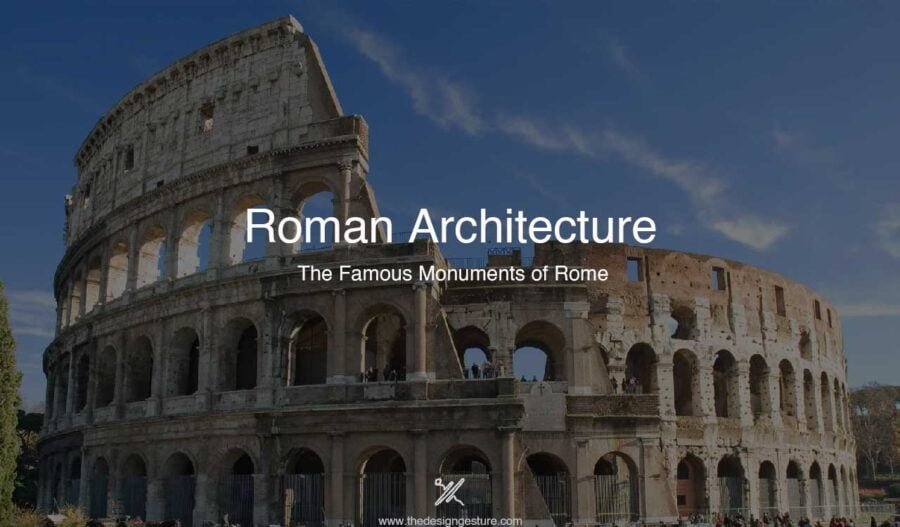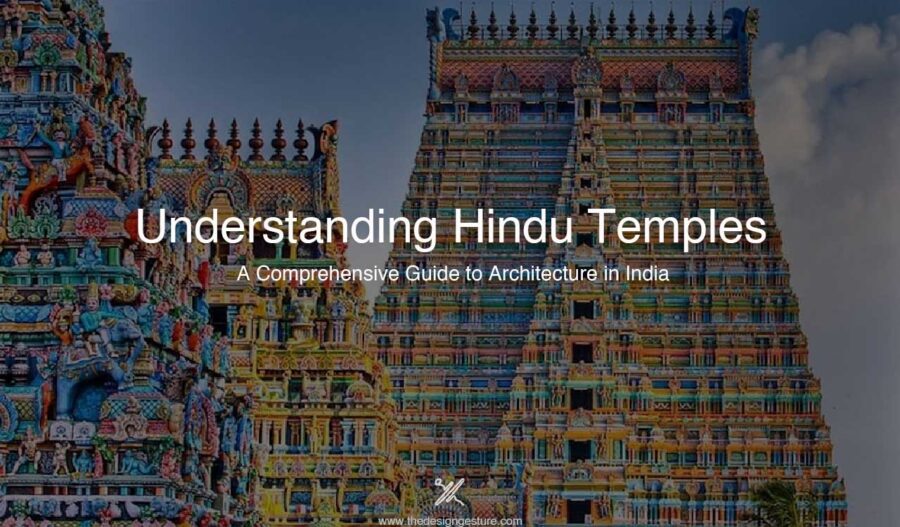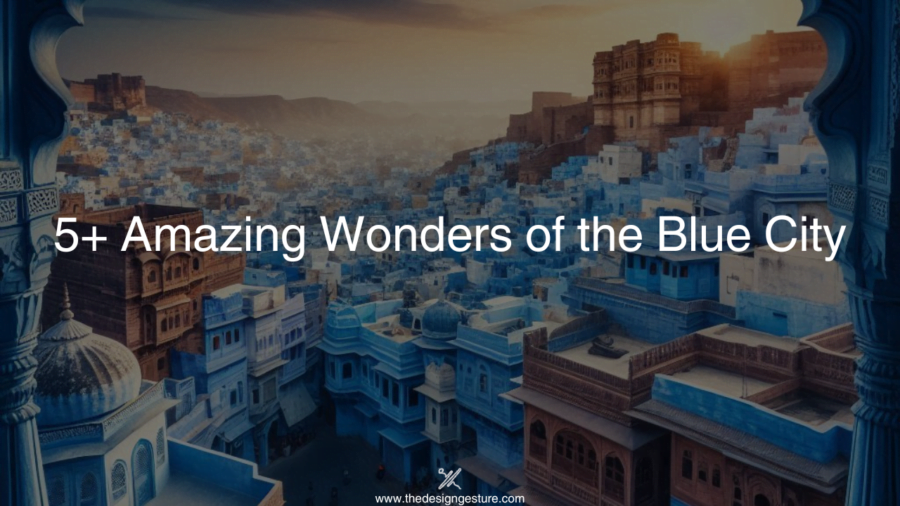Table of Contents
Introduction
Suppose you ever find yourself roaming about in Rome. In that case, it’s either because you’re dreaming or it’s just your lucky day when the wind of destiny has chosen to blow you around to discover the ancient secrets and timeless beauty of The Eternal City; A day like this is rare, it’s what many have always wished for, to see the architectural marvels of Rome where every corner whispers stories of history and arts come to life. So if you are roaming in Rome, go with the flow and live the Roman experience! And what if you don’t? Chill out, that’s why I’m here, to give you a glimpse of the complete Rome experience within a few minutes.
The Colosseum- Roman Architecture
The Colosseum rome history, elliptical in shape, is a remarkable and gigantic ancient construction made from stones and concrete. It shows a detailed composition of vaults and groin vaults and has dimensions of 620 x 513 feet (189 x 156 meters). The top three tiers of the arena are decorated with beautiful arcades and columns in the Doric, Ionic, and Corinthian styles, the same styles that inspired Renaissance architecture. The primary frame and facade are constructed from travertine, the secondary walls are made from volcanic tufa, and the inner bowl and arcade vaults are composed of concrete.
Building Elements
As you gaze at the Colosseum, the arches catch your eye right away. You can’t talk about Rome’s architectural marvels without bringing up arches.
It is the signature of the Roman architecture. The Colosseum has 240 arches, there are 80 arches on each tier. The first tier consists of Doric-style columns and was built especially for the wealthy class of Rome. The second tier provided seating space to the noblemen and middle class of the Roman Empire. The columns used on this tier are of the ionic order. The third tier was open to the public since it offered the least view of the arena. It consists of columns of the Corinthian order.
Below the first tier is the Hypogeum, the underground floor of the Colosseum. It consists of a system of tunnels that open into two major corridors. The structure below the earth had no ventilation openings. This is where slaves and animals that fought in the arena were kept. It was left open so visitors could see what used to be a nightmare for the captives, and surprisingly it is an architectural marvel for a lot of visitors to the Colosseum
There are 80 entrances into the Colosseum, the public used 76 to access the structure the remaining 4, were the main entrances; the magistrates used the North entrance, the South by the emperor and senators, and the East entrance was the gate of life and participants came into through this entrance, but only ones that survived returned to their chamber through the same entrance. The West gate was called the gate of death, participants who died in the arena were exited from this entrance.
Visitors Experience
The Colosseum is always a busy place, no one wants to miss the chance to see this Architectural Marvel when in Rome. Three weeks ago, I was standing on the cobble-stoned way by the structure, my neck hurt from excessively looking up, and I didn’t even care as if I was on a quest, very close to finding a hidden treasure. Some visitors preferred to move further away from the base of the structure to avoid looking up at the sky and to get a better view for selfies.
The Pantheon Rome
Description
The Pantheon in Rome is another architectural marvel of Rome. This piece of architecture reflects the ingenuity and vision of Roman engineering. Its most striking feature is the huge dome, a perfect hemisphere of concrete that was revolutionary.
A round hole at the peak of the dome, The kind of a circle you would hardly notice since it’s always filled with light, serves two functions – it reduces pressure on the structure and lets illumination into the room making lines of brightness and dark all the time. The structure is round but has a Portico attached to it. On the Portico is an inscription in Latin: “M·AGRIPPA·L·F·COS·TERTIVM·FECIT” which translates into, Marcus Agrippa, son of Lucius made this.
Building Design
The dome of the Pantheon Rome is the largest ever built with masonry and unreinforced concrete having a diameter of 43.44 meters, with a height of 21.75 meters. Believe it or not, there’s something glorious about massive edifices that leave us swooning, call it an architectural marvel of Rome and I won’t have a thing to add than nod in agreement. It weighs 5000 metric tonnes, with a thickness of 5.9 meters at the base and 1.4 meters on the top. The interior of the dome has square-shaped panels called coffers. There are 28 of them arranged in rolls of 5. Their function was not only for decorative purposes, they made the dome lighter.
The drum, also known as the rotunda is the round part of the Pantheon on which the dome sits. It measures a height of approximately 33 meters with a base thickness of 6.4 meters. The base was made this thick to withstand the weight of the dome. The Portico is the entrance that leads into the Pantheon. It faces the Piazza della Rotunda. It is a Pediment held up in place by granite columns of the Corinthian order, there are 8 of these columns on the first roll and two groups of 4 behind.
Visitors Experience
There’s everything to marvel at about the architecture of Rome, and that’s why Rome attracts more tourists every year. When visitors approach the Pantheon, the large portico with massive Corinthian columns immediately attracts attention. The sheer size of the façade combined with the lively atmosphere of the Piazza della Rotonda creates the conditions for an impressive experience. The imposing bronze doors, a rare surviving feature from antiquity, invite visitors into a space that has been a focal point of spiritual and architectural significance for almost two millennia.
The massive bronze doors, a surviving relic from ancient times welcome guests into an area that has stood as a center of spiritual and architectural importance for two thousand years. As people step inside, the sudden shift from Rome’s bright sun to the shadowy interior often amazes them. The building’s size, with its flawless proportions and balanced design, creates a feeling of wonder.
The Oculus, a 27-foot-wide hole at the dome’s peak, catches the eye right away letting natural light pour in. This sky-like feature does more than just light up the inside. It links the world below to the heavens above highlighting the Pantheon’s first purpose as a tribute to all Roman gods. This same fact makes it one of Rome’s architectural marvels.
The Basilica of St Peter
Description
Growing up in a catholic family, it was my big dream to see the Basilica of St Peter. This place holds great significance for Christendom. It was the first church built in memory of St Peter after his martyrdom. St Peter’s Basilica better called the Basilica of St Peter, was built under the reign of Emperor Constantine I. It is an important building in the history of Rome and obviously, the designers did it justice in its creation as the significance of this place is felt at first glance.
This edifice is an architectural marvel in Vatican City, an example of Renaissance and Baroque design. Its grand façade has tall Corinthian columns and a balcony known as the Loggia of Blessings. The expansive nave, flanked by side aisles and chapels, leads to the main altar under Bernini’s ornate bronze baldacchino. The majestic dome by Michelangelo, supported by massive pillars and crowned by a lantern, dominates the silhouette. The cruciform floor plan of the basilica includes a prominent transept and an apse, which houses the Cathedra Petri.
Building Elements
The entrance used to be a passage through an atrium surrounded by fountains. St Peter’s Basilica just like other Roman churches, had 5 aisles, a central naive, and two small aisles.
The ancient Basilica of St.Peter had a weirdly balanced and harmonized, blended with nature yet standing out among other structures of its time. It might have looked as if it was constructed of general bricks and wood but decorated with marble, colorful mosaics, and extravagantly painted frescos on top of its walls. In terms of its size, this church could contain between three thousand people and four thousand. Its windows displayed frescoes depicting great patriarchs, prophets, and scenes from the Bible.
The interior of the Basilica was where the architectural marvel existed the most. It was made of many mosaic frescoes, some notable works are the Navicella showing St Peter when he walked on water, epiphany, and a standing Madonna. Most of the columns used in the Construction of the Basilica were taken from previous Roman Buildings, they were a mixture of different materials like red granite and white granite. The Basilica was built over the tomb of St Peter, a small shrine was built above the grave and was considered his official tomb. With time more tombs were made next to it, and this was all due to the importance of St Peter.
Visitors Experience
For individuals eager to have an aerial perspective of Rome, climbing to the top is an unforgettable experience. It is characterized by narrow corridors and a winding staircase that extends upward; but once at the apex, you are treated to an architectural marvel – a panoramic view of the whole City and splendid Vatican Gardens. Many visitors attend mass or spend time in silent prayer and find a spiritual connection in this sacred place. The sound of choirs, the sight of devoted pilgrims, and the presence of clergy performing rituals all contribute to a deep sense of spirituality.
Trevi Fountain
Description
The name “Trevi Fountain” might be new to you but I’m sure you must have seen it in movies or posts on Facebook and Instagram. It’s a sculpted grand figure, standing in front of a grand building with huge Corinthian columns, a vault opening to the facade as an arch, and water streaming down on the rocks where the figure stands into a large basin. The statue of Neptune, that is the god of the ocean is encircled by figures representing prosperity and fitness. This fountain is known for the custom of throwing coins over one’s back if one desires to go back to Rome.
Building Elements
The fountain is approximately 26.3 meters high and 49.15 meters wide, making it the largest Baroque fountain and also an architectural marvel in Rome. It is made of travertine, a limestone deposited by mineral springs. The central section of the fountain is designed to resemble a triumphal arch, a typical Baroque feature. This arch covers the figure of Oceanus and the surrounding sculptures. The fountain includes several niches and Corinthian columns, adding depth and structure to the design. On the top of the columns are placed statues that represent the four seasons.
Visitors Experience
Movies and books about myth and romance sell well for a purpose. There is an immense mystery surrounding the Trevi Fountain, which they say got its start in 1954 with a film known as Three Coins in the Fountain. According to tradition, throwing just one coin into it guarantees that you will return to Rome.
If two coins are tossed, people will find their love here. However, tossing three coins means that the person met should be married (if at all). Isn’t this an incredible marvel of Rome? You get to see the beautiful sculpted figures come to life as the dripping water sounds from the fountain sending you to an ethereal state, you even get to be granted three wishes. This has got to be the greatest Architectural marvel of Rome!
The Villa Borghese
Description
At the core of Rome Castle, there is a vast area occupied by Villa Borghese Park. Famous artists from various art movements like Baroque, Neoclassicism, and Eclecticism were involved in creating the buildings, sculptures, monuments, and fountains located in the villa.
These artistic treasures are set amidst ancient trees, ponds, Italian gardens, and extensive open spaces, all of which have been carefully designed. Cardinal Scipione Borghese, the nephew of Pope Paul V, commissioned Flaminio Ponzo and his student Giovanni Vasanzio to build this architectural marvel, which was taken over by Girolamo Rainaldi in 1621. Domenico Savino da Montepulciano designed the gardens. The projects initiated by Scipione Borghese lasted from 1608 until he died in 1633.
Building Elements
Spanning over the famous seven hills of Rome, Villa Borghese’s park is located within the Aurelian walls. Today, this hill features a beautiful park with wide avenues and tree-lined paths decorated by busts of internationally known artists which make it a stunning place. The Pincio Terrace provides magnificent views across all of Rome’s main sites from Piazza del Popolo to the St Peter Basilica dome offering an astonishing panorama you cannot find elsewhere.
Visitor Experience
For those people wishing to see a breathtaking panorama of Rome, Pincio Terrace is very famous. It looks down on the city and has fantastic views of well-known sites such as St. Peter’s Dom and the Vittoriano Dome. When the sun goes down, the sky turns into a pallet of colors that bring forth peace inside you and make your photos more special or for taking some time out to have quiet thoughts in your head.
Villa Borghese Park is not only known for its beautiful sceneries but also as it combines artistry with nature thereby nicknamed as an architecture marvel found in Rome. You cannot miss visiting Villa Borghese if you are either an art devotee or one who loves nature or just requires tranquility around them.
Castel Sant’ Angelo
Description
Castel Sant’Angelo is famously known as the Mausoleum of Hadrian – a true work of art situated in Rome, on the right side of the River Tiber, close to Ponte Sant’Angelo bridge which is not very far from Vatican City. The monument is located between the Borgo and Prati districts. A fortified passageway called the “Passetto” connects the castle with the Vatican. Over the years, the castle was heavily m
Building Elementsodified during the Middle Ages and the Renaissance.
The magnificence of Roman engineering especially combined with later styles and influences can be seen in the architecture of Castel Sant’Angelo. This architectural marvel reflects the totality of Roman design. The lower part consists of a huge round form made out of concrete and brick, while the upper part joins a square building with more statues and other artistic details that signify Baroque mannerisms. The lowest level signifies the antiquity of Roman decorative arts. The cylindrical section was made from bricks having a thickness of three meters.
On the other hand, the top layer at Castel Sant’ Angelo is one great example of Baroque-style architecture. It is square in shape and built with different ornaments and statues. The figures depict angels, emperors, and other people who held significant positions over time indicating all the different roles that this castle had at various moments. In Rome, there isn’t any bridge like the Bridge of Castel Sant’ Angelo; an architectural marvel like this is just beyond compare.
It was constructed by Emperor Hadrian in the year AD 134 to join up his mausoleum situated within the city of Rome which now serves as Castel Sant’Angelo. This structure was called Pons Aelius which is derived from Hadrian’s family name as well as five arcs spanning the Tiber River adorned with the statues of angels carved out from marble stones done by Bernini in the 17th century.
Visitors’s Experience
Undoubtedly the terrace is a highlight of this visit to the architectural wonder. Upon exiting this building, you will witness a spectacular panorama of Rome. In front of you is an expanse that features monuments such as St. Peter’s Basilica, the Vatican, and hills beyond them. Here one can stand still for a moment lost in thought before the majesty of the palace and city that it has kept under surveillance for so many years.
Conclusion
In conclusion, this article wants us to be immersed in the everlasting beauty and historical importance of Rome’s iconic structures. From the splendor of the Colosseum to the minute details in the Pantheon, these architectural marvels are not just a reflection of ancient civilizations’ creativity and design skills but also continue to inspire today’s artistic and engineering works.
While exploring what Roman architecture has to offer, I encourage you to visit these places or read more about them so that you can understand their significance. Let whatever you know about Roman architecture fuel your interest in history, art, or whatever remains active within humanity. Be on board with this adventure if you want to rejoice at what Rome embodies!




